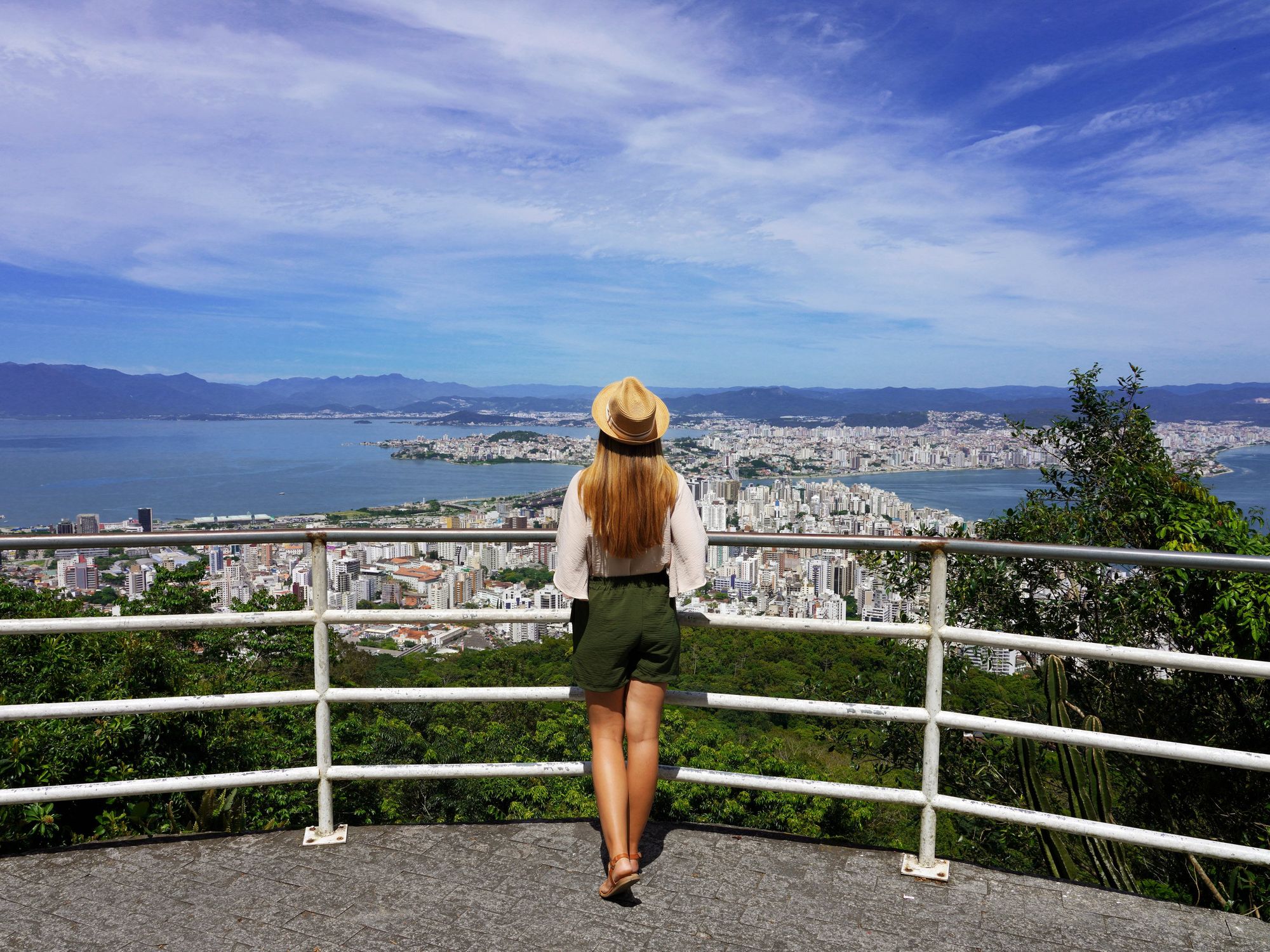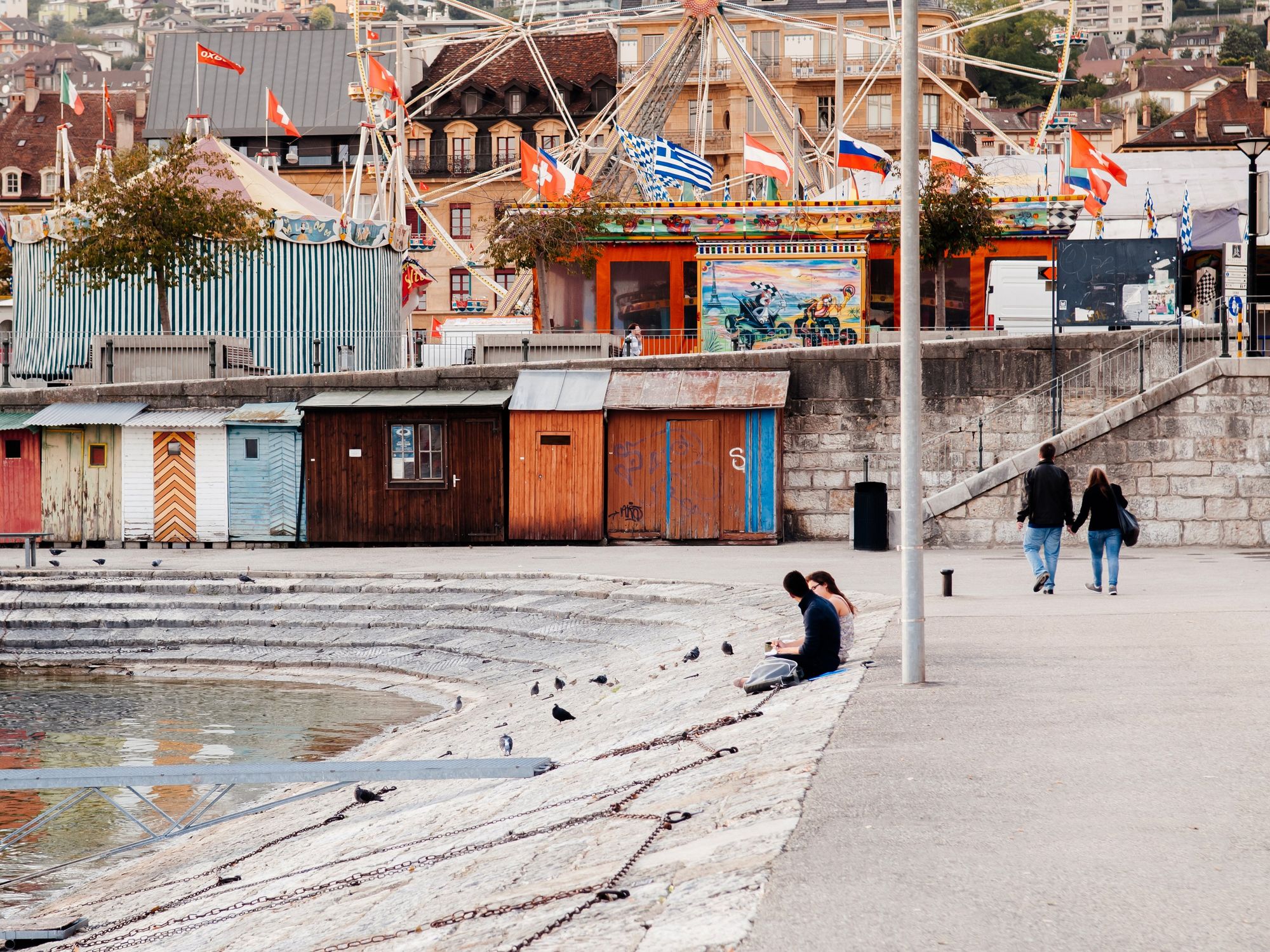Shifting safety ranks
When it comes to assessing the world's safest countries, one might assume a degree of consistency in the rankings. However, the reality is far more dynamic. Recent shifts in the rankings of the safest countries, as outlined in the Berkshire Hathaway Travel Protection report, underscore the fluidity of global safety standards and the factors influencing them.
Japan's leap from the 19th to the 12th spot is a striking example of how a country can enhance its safety standards. On the other end of the spectrum, Denmark's fall from the second to the eighth position is a reminder that safety rankings are not immune to change. Various factors, including shifts in domestic policies, socio-economic changes, or even changes in the perception of safety by travellers, can impact a country's safety standing.
 A tourist Florianopolis city, Santa Catarina, BrazilSergiomontl | Dreamstime
A tourist Florianopolis city, Santa Catarina, BrazilSergiomontl | Dreamstime
Perhaps the most striking change is Brazil's surge from the 42nd to the 15th place. The country's remarkable climb reflects significant improvements in national security, tourism infrastructure, and overall traveller experience.
Of course, safety ratings are not predictive. The fact that Canada currently ranks as a safe destination doesn't ensure its future position. Safety dynamics are subject to political shifts, economic changes, and unforeseen events. The ratings do not specifically account for natural disasters, like heatwaves or hurricanes. Plus, safety can vary within a country. A nation might be deemed safe on a global scale, but certain regions could face challenges that impact their local safety standings.
A category-wise safety scan
The report not only highlights these countries' rankings but also delves into the nuances of what safety means in different contexts. It underscores the importance of not just considering crime rates but also environmental factors and localized risks.
This year, Canada has taken the lead, rising from the sixth position in 2023. Its vast landscapes, low population density, and cold weather contribute to its high safety ranking. However, travellers should be aware of wildfires, which have impacted air quality in major cities.
 People sit by a Neuchâtel pier in Switzerland with colourful storehouses in the background.Nuvisage | Dreamstime
People sit by a Neuchâtel pier in Switzerland with colourful storehouses in the background.Nuvisage | Dreamstime
Switzerland, known for its longstanding reputation for security, ranks second. The beauty of its alpine landscapes is accompanied by risks such as avalanches and rockslides, particularly important for outdoorsy types to consider. Norway stands at third, with Oslo noted for its low crime rate. While Norway offers excellent public transport and stunning natural beauty, pickpocketing, especially in areas like the Oslo Central train station, remains a concern.
Ireland, climbing to the fourth position, is relatively safe with low homicide rates. However, an increase in petty thefts in urban areas is something travellers should be cautious about, especially in pub-heavy locales. The Netherlands, previously at the top, now ranks fifth. Amsterdam's reputation as one of the world's safest cities holds, but the risk of petty crimes like pickpocketing, often involving distraction tactics, remains present.
Generational safety gap
The report breaks down safety into several sub-categories, each revealing top countries excelling in specific safety aspects. For instance, in the category of safety from violent crime, countries like Canada, Norway, and Denmark top the list, indicating their robust law enforcement and social stability. Belgium and Portugal, newcomers in this category, underscore the changing landscape of global safety.
When it comes to safeguarding against terrorism, nations like Switzerland, Norway, and the United Kingdom are recognized for their stringent security measures and intelligence capabilities. Similarly, in transportation safety, countries with well-developed and reliable transport infrastructures like Canada, Denmark, and Switzerland lead, while Iceland is noted for its limited need for extensive travel due to its geographical compactness.
A sign displays a torn poster thanking the National Health Service.  A sign in England displays a torn poster thanking the National Health Service. Johndavidphoto | Dreamstime
A sign in England displays a torn poster thanking the National Health Service. Johndavidphoto | Dreamstime
Health safety, a category of increasing importance, especially in the wake of the COVID-19 pandemic, sees countries like Canada and Switzerland excelling due to their superior healthcare systems and public health policies. Brazil’s entry into the top 10 in this category is a note-worthy development, reflecting significant improvements in its healthcare infrastructure.
The report also highlights the countries providing a safer environment for women, LGBTQ+ individuals, and people of colour. Canada, Norway, and Switzerland rank highly, demonstrating their commitment to social inclusivity and legal protections for these groups.
Interestingly, the report reveals variations in safety perceptions based on age and income. Millennials and Gen Z, for instance, have differing views on what constitutes a safe country. While Millennials place countries like Norway and Switzerland high on their list, Gen Z respondents lean towards nations like Canada and the United States, with more adventurous choices like Jamaica and the Dominican Republic also featuring in their top 10.
Home, sweet home
For Canadians, this news highlights the variety of experiences available within the country — from the awe-inspiring Rocky Mountains to the historic streets of Québec City and the cultural diversity of Toronto. It suggests that some of the safest and most fulfilling travel experiences might just be found close to home.
Here are the top 15 safest countries in 2024:
- Canada
- Switzerland
- Norway
- Ireland
- Netherlands
- United Kingdom
- Portugal
- Denmark
- Iceland
- Australia
- New Zealand
- Japan
- France
- Spain
- Brazil

 A tourist Florianopolis city, Santa Catarina, Brazil
A tourist Florianopolis city, Santa Catarina, Brazil People sit by a Neuchâtel pier in Switzerland with colourful storehouses in the background.
People sit by a Neuchâtel pier in Switzerland with colourful storehouses in the background. A sign in England displays a torn poster thanking the National Health Service.
A sign in England displays a torn poster thanking the National Health Service. 